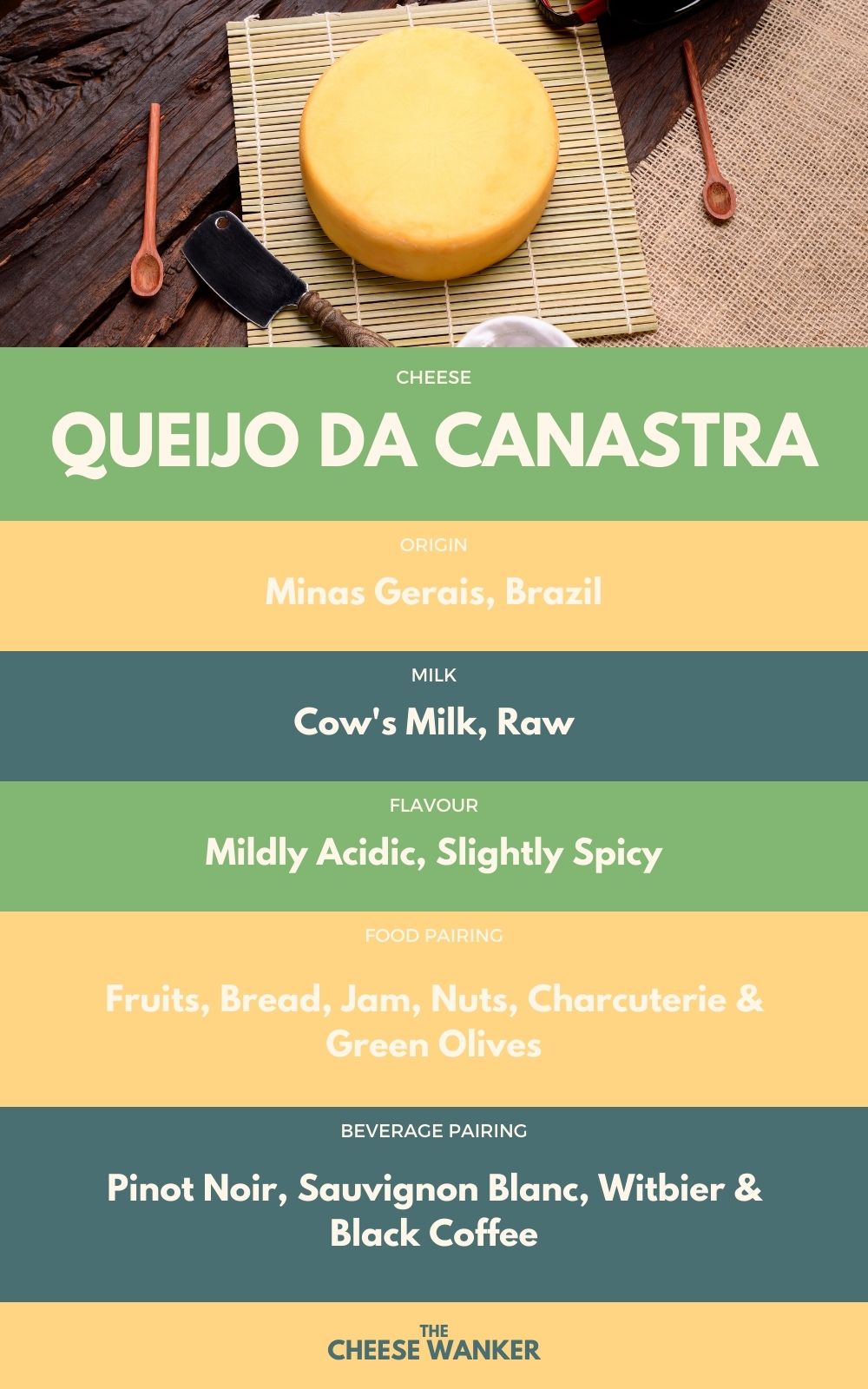Nestled in the heart of Minas Gerais, lies a cheese that carries the essence of tradition, culture and culinary heritage. Queijo da Canastra, often referred to as the ‘Jewel of Brazilian Cheeses’, is not just a dairy product. It is a piece of history that has been crafted for generations. Join us on a journey to explore the secrets, flavours and stories behind this iconic cheese.
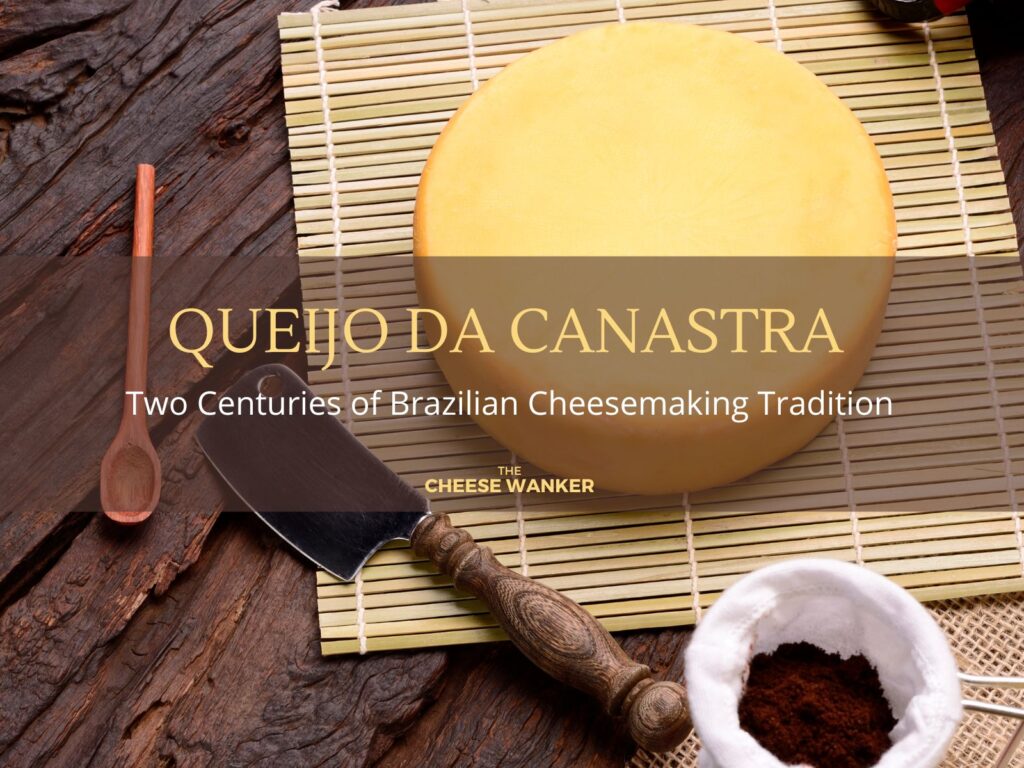
History of Queijo da Canastra
The history of this Brazilian cheese begins with Portuguese settlers some 200 years ago. Indeed, the elders in Minas Gerais share stories about how the “tropeiros” (cattle drivers) brought the cheese during their journeys.
In the early days, the villagers produced cheese primarily for their family’s sustenance. But gradually, they started selling their cheese in the nearby villages.
To ensure that their cheese will travel safely, they would age each wheel for a minimum of 30 days. At this age, Queijo da Canastra’s texture becomes firmer, and its natural rind turns yellow.
That’s why the traditional Canastra cheese has a yellow natural rind and a semi-soft, flavourful paste.
Today, Queijo da Canastra has become so famous that it is protected by the Instituto do Patrimônio Histórico e Artístico Nacional (National Institute of Historic and Artistic Heritage). Since 2008, both its geographical origin and production methods are a Brazilian intangible cultural heritage.
Where is Queijo da Canastra made?
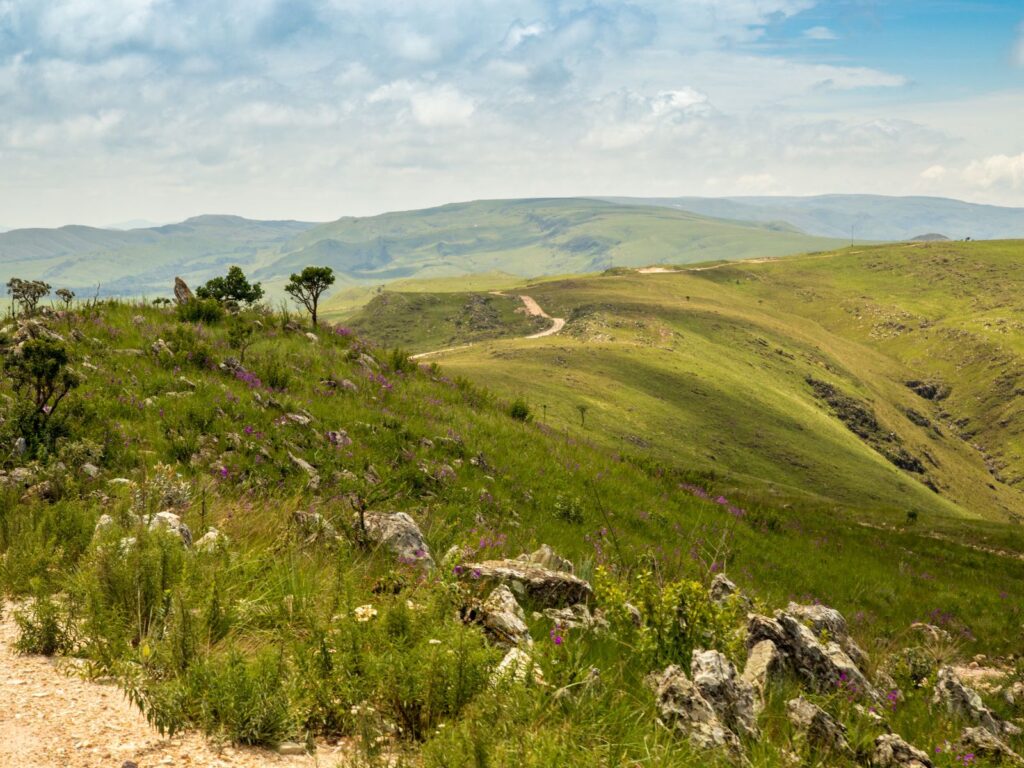
The Serra da Canastra is a mountain range located in the southeastern region of Brazil, primarily in the state of Minas Gerais. It is known for its rugged terrain, deep canyons and rich biodiversity.
Without a doubt, Serra da Canastra is an important geographical feature in Brazil. But it is most famous for being the region where the Queijo do Canastra is produced.
Located in the western part of Minas Gerais, the Canastra Cheese Region is approximately 320 km from Belo Horizonte, 520 km from São Paulo and 618 km from Rio de Janeiro
To be authentic, Queijo da Canastra must be crafted within one of these 7 municipalities: São Roque de Minas, Medeiros, Vargem Bonita, Tapiraí, Delfinópolis, Bambuí, and Piumhi. Together, these municipalities form the delimited area covered by the Indicação de Procedência (Protected Geographic Indication).
The type of pasture, the cattle, the terrain, the climate and the purity of the water lend their distinct characteristics to the cheese the artisans create. Collectively, all these attributes represent the terroir of the Serra da Canastra.
Cheese is much more than just a product in this region. Indeed, it represents the local culture, traditions and is an integral part of the history of nearly every family.
How is Canastra made
In the heart of the Canastra Cheese Region, artisans continue to craft cheese as they have for over two centuries. These dedicated cheesemakers uphold stringent regulations and embrace best practices essential for artisanal cheese production, ensuring an exceptional end product.
Local fresh and raw milk
The cornerstone of exceptional cheese lies in the quality of its milk. Queijo da Canastra begins with the milk of cows born and raised freely in the lush pastures of the region, feasting on natural vegetation. Certainly, what sets this cheese apart is the exclusive use of raw milk in its making.
In an effort to promote sustainability, the farmers opt for a single morning milking. By doing so, they leave the afternoon milk for the nourishment of the calves, fostering a balanced ecosystem.
Transformation of the milk
With the addition of rennet, the cheesemaking process kicks into gear. And it’s time to introduce the “pingo“, a natural starter culture crafted by the skilled cheesemakers.
This unique process involves collecting whey from draining cheeses and repurposing it as a natural fermenting agent for the following day’s production. This ingenious practice imparts distinct characteristics to each cheesemaker’s cheese, as they all use their proprietary “pingo“.
Salting the cheese
As the curd takes form within the moulds, each cheesemaker imparts their personal touch to the cheese. The ingredient of choice here is coarse salt—nothing more, nothing less.
However, it’s the quantity of salt that becomes the distinguishing mark between one Canastra maker and another.
Following salting, the makers carry out a step called “grosar“, or roughening. During this phase, each cheese wheel undergoes a meticulous outer sanding process, refining its appearance.
Affinage
To attain the coveted flavour, texture and colour characteristic of traditional Canastra, each cheese ages on maturation boards until it reaches its peak. And this maturation process is where the cheese truly develops its organoleptic properties and identity.
The key to success in this phase lies in the daily ritual of flipping each cheese, ensuring it matures uniformly on both sides.
Different types of Queijo do Canastra
The genuine flavour of Queijo da Canastra reveals itself over time, offering cheese enthusiasts three distinct ages to savour. Read on to learn about them, and also discover two special versions of this traditional cheese.
Canastra Fresco (Fresh Canastra)
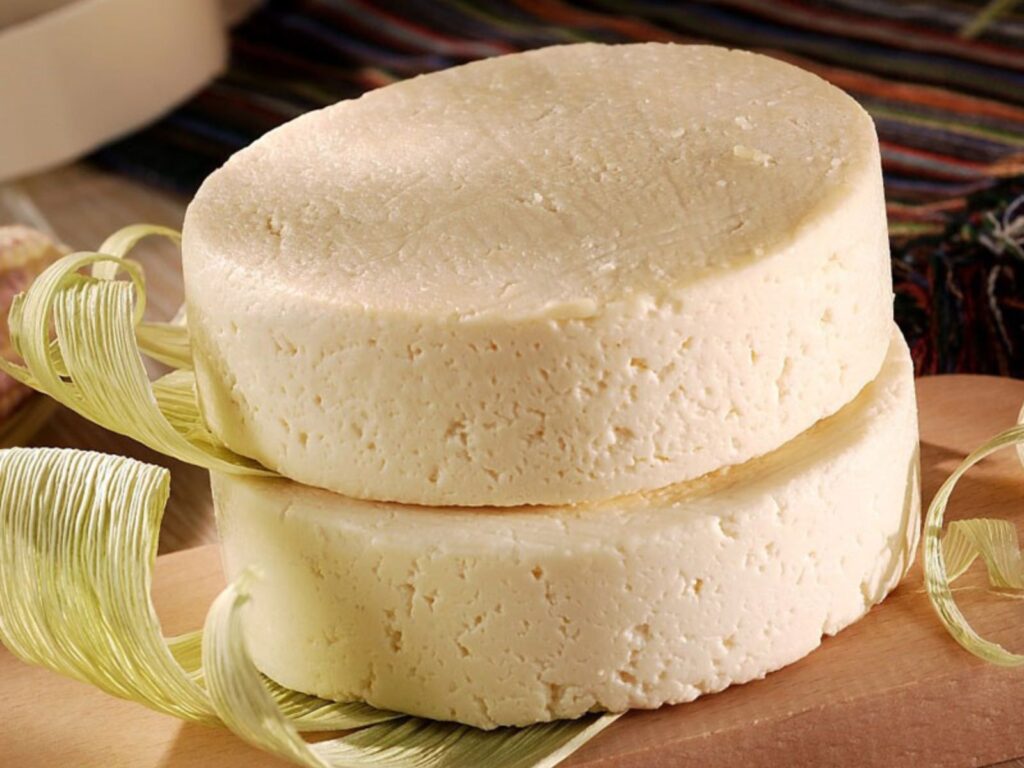
Canastra Fresco embodies youthful cheese, brimming with the essence of fresh milk and sporting a soft texture that gently dissolves in your mouth.
This cheese is a breakfast staple and a delightful partner for sweet milk. Additionally, its creamy, delicate notes make it an ideal choice for various culinary creations.
Canastra Meia Cura (Half-Cured Canastra)
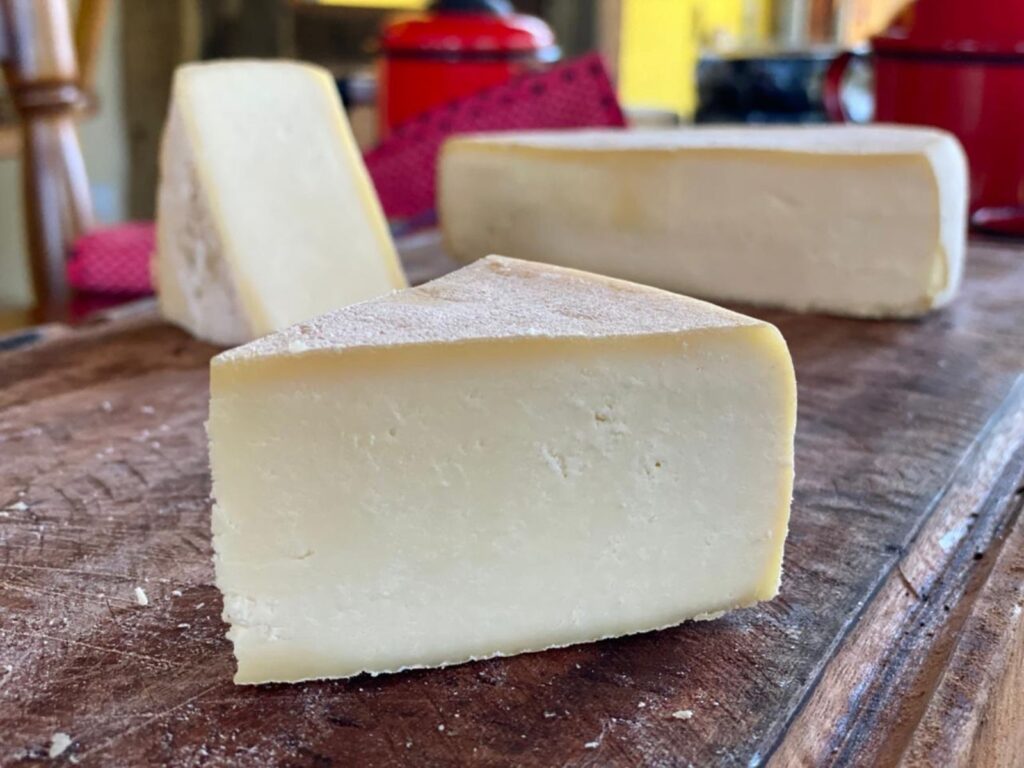
Next, the “Meia Cura” version of Canastra enjoys an ageing period of approximately ten days.
Its character is perfectly suited to accompany a freshly brewed coffee or a delicious slice of guava preserve. Indeed, the flavours are in harmony, creating a delightful symphony for your taste buds.
Canastra Curado (Cured Canastra)
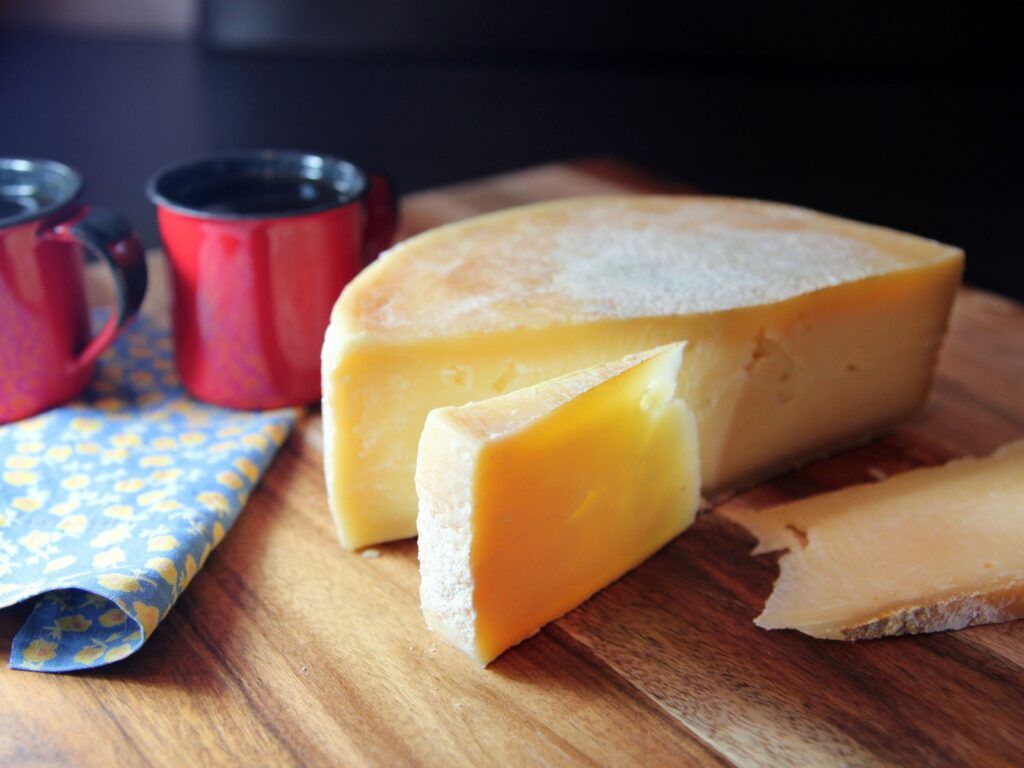
Harkening back to the Canastra of yesteryears, Canastra Curado undergoes an ageing process of over 22 days. By that time, each Canastra wheel weighs between 900 to 1300 grams.
Furthermore, this patient maturation bestows upon it a distinctive and robust flavour profile, rendering it a culinary gem. It is an indispensable ingredient for gastronomy and serves as an exceptional companion to special wines and craft beers.
Notably, it is the only variety that can bear the coveted Canastra Indicação de Procedência seal, a testament to its heritage.
Canastra Merendeiro (Snack-Size Canastra)
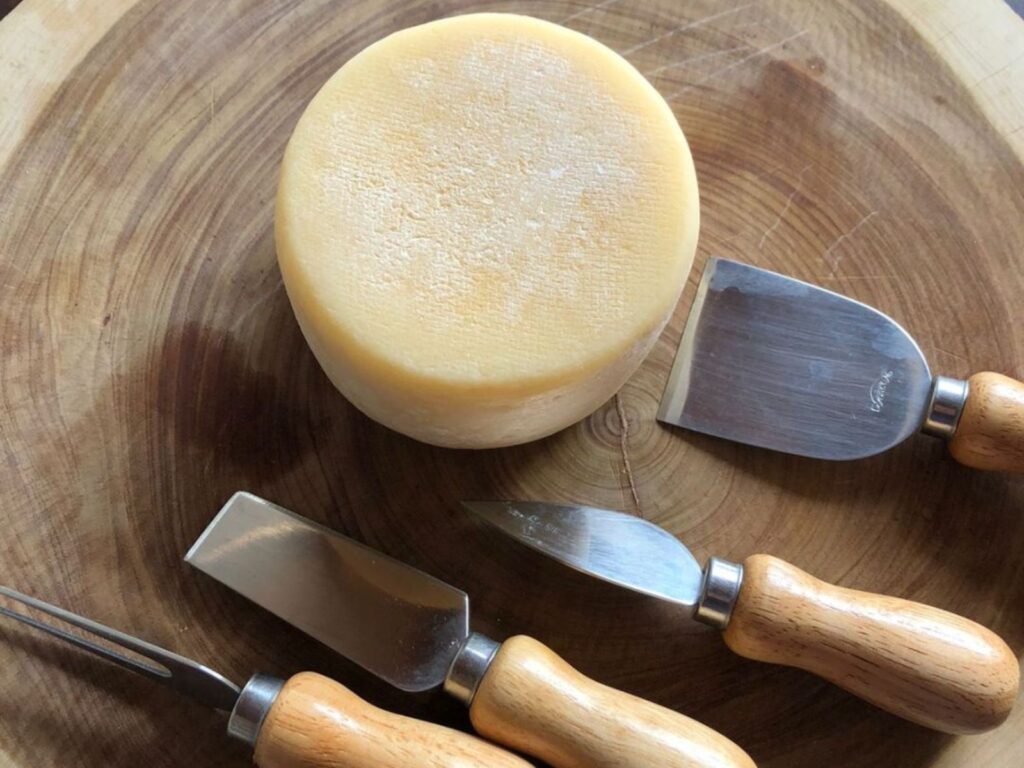
Next, we have the smallest version of this cheese. In fact, Canastra Merendeiro rounds weigh between 300 to 400 grams. Derived from the Portuguese word “merenda“, meaning “snack”, Canastra Merendeiro is designed for quick, convenient bites.
As such, it’s the perfect option for packed lunches or satisfying snack moments. And all this without compromising the unique flavour, texture and artisanal craftsmanship that define Queijo da Canastra.
Canastra Real (Royal Canastra)
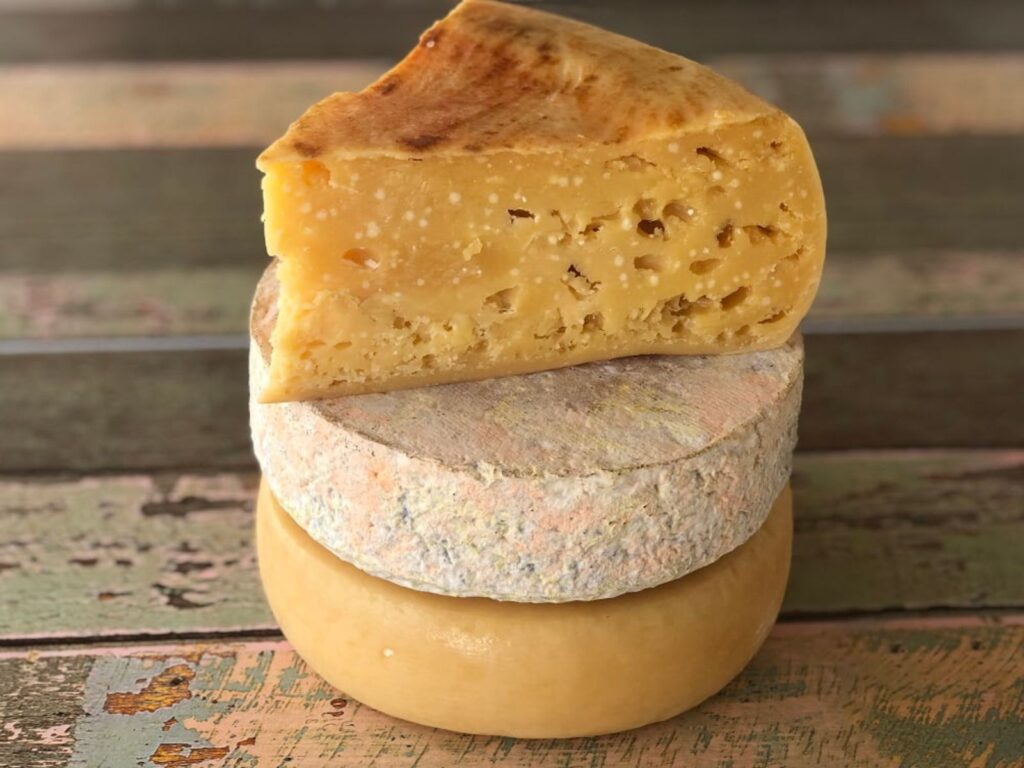
Finally, Canastra Real stands as an extraordinary member of the Canastra lineage, celebrated for its remarkable ageing process.
This accolade-worthy cheese distinguishes itself with a rich and exclusive character. Encased in a firm, golden-yellow rind, its interior reveals a concentrated, dry texture. This is a testament to its extended maturation, surpassing a remarkable 12-month period.
When you enjoy a morsel of Canastra Real, prepare for a sensory journey like no other. The initial encounter is marked by a delightful granularity, akin to fine grains of sand. But it swiftly yields to a lush, mouth-watering melt-in-your-mouth sensation.
On the palate, Canastra Rela unveils an intense, subtly sweet flavour, concluding with a nuanced interplay of bitterness and gentle spiciness.
Undoubtedly, Canastra Real’s sensory profile is a testament to its artisanal excellence and dedication to preserving tradition.
Organoleptic properties of Canastra
When examining Canastra cheese, an array of distinctive characteristics comes into view, both in its external appearance and composition.
External appearance
Canastra cheese typically boasts a cylindrical form, which may appear flat or exhibit slight bulging on the sides.
The cheese develops a thin, yellowish rind as it matures, which tends to darken over time, often displaying spots and traces of yeast. This rind releases a mild, evocative aroma reminiscent of milk fat.
Internal features
Underneath its rind, the cheese presents a semi-hard to soft and entirely homogeneous paste. Its colouration may lean slightly toward yellowish hues, sometimes accompanied by darker edges, particularly in the case of aged varieties.
Notably, Canastra and Canastra Merendeiro cheeses may feature a smattering of mechanical or fermentation holes dispersed throughout. In contrast, Canastra Real is defined by its larger, rounded and lustrous holes.
Flavour profile
Overall, Queijo da Canastra delivers a delightful palate experience, offering a mildly acidic, non-spicy and thoroughly enjoyable taste. Without a doubt, it’s a cheese meant to be appreciated for its harmonious blend of flavours and textures.
Serving guide for Canastra cheese
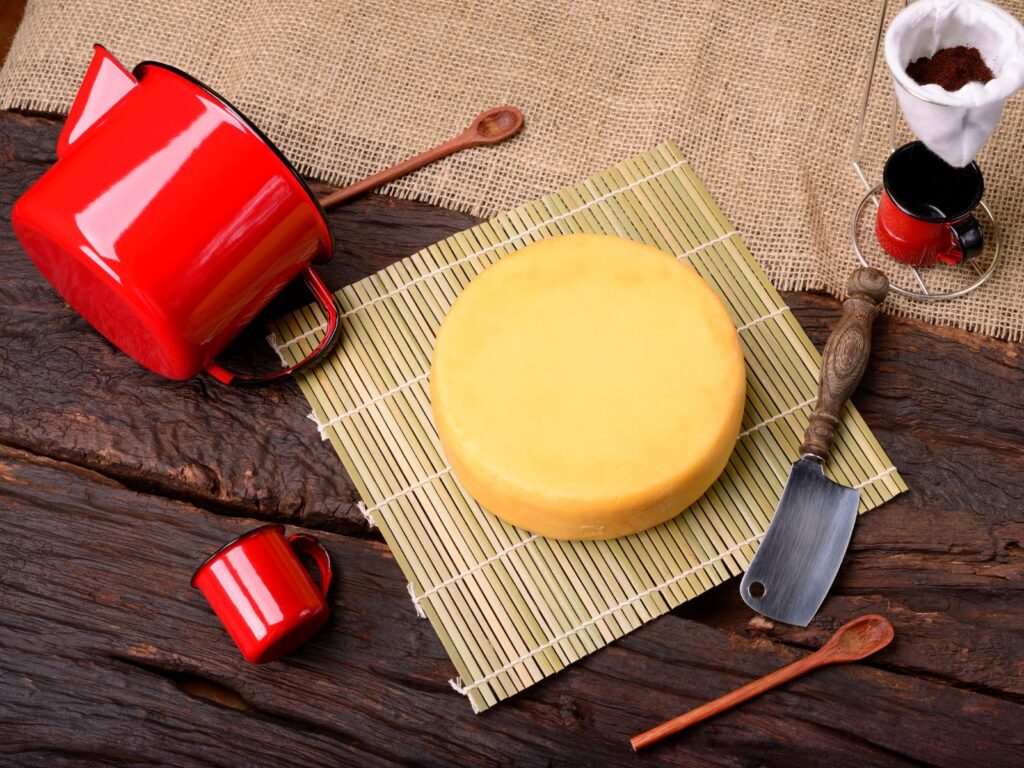
Queijo da Canastra, with its unique flavour and texture, is a delight to savour on its own or paired with various accompaniments.
Here’s a serving guide to help you make the most of this exquisite Brazilian cheese:
1. Cheese board presentation
- Begin by arranging slices or wedges of Canastra cheese on a wooden or slate cheese board.
- Consider adding labels to distinguish Canastra from other cheeses if you’re serving a cheese platter.
- Decorate the board with complementary items like fresh fruits, nuts and guava preserve for a visually appealing presentation.
2. Pairing companions
- Fruits: Canastra cheese pairs wonderfully with fruits such as apples, pears, grapes and guava. Their sweetness balances the cheese’s savoury notes.
- Crackers and bread: Serve Canastra with a selection of artisanal crackers, baguette slices or crusty bread to add a satisfying crunch and texture contrast.
- Jams and chutneys: Accompany your Queijo da Canastra with sweet spreads like guava paste or mango chutney for a delightful flavour combination.
- Nuts: Toasted almonds, walnuts or pecans provide a pleasing nuttiness that complements the cheese’s richness.
- Charcuterie: If you enjoy meat pairings, consider adding some slices of prosciutto, salami or thinly sliced smoked ham to the platter.
- Olives: A bowl of quality olives, whether green or black, can add a briny, salty element to your cheese board.
3. Wine and beverage pairings
- Wine: Canastra cheese pairs beautifully with a variety of wines. You can opt for a light red wine like Pinot Noir or a fruity white wine such as Sauvignon Blanc or Chardonnay. Sparkling wines, like Prosecco or Champagne, also complement the cheese’s creamy texture.
- Beer: For beer enthusiasts, a crisp lager, pale ale or Belgian-style Witbier can provide a refreshing contrast to the cheese’s flavours.
- Tea or coffee: If you prefer non-alcoholic options, consider serving Canastra cheese with a well-steeped, aromatic herbal tea, like chamomile or mint. Or a cup of freshly brewed black coffee.
- Cachaça: For a Brazilian twist, you can also enjoy Canastra cheese with a taste of cachaça, a traditional Brazilian spirit.
4. Temperature matters
Allow Canastra cheese to come to room temperature before serving. This enhances its flavours and softens its texture, making it even more enjoyable.
By following this serving guide, you can elevate your Canastra cheese experience and fully appreciate the rich cultural and culinary heritage it represents. Whether you enjoy it as a standalone treat or as part of a diverse cheese board, Canastra cheese is sure to delight your taste buds.
Availability of Canastra outside of Minas Gerais
In 2012, a notable headline emerged in Brazil — cheese smuggling was making waves, and at its core was the beloved Queijo do Canastra.
Despite Queijo do Canastra’s recognised cultural significance, the cheese industry grapples with ongoing regulatory tensions, particularly in its heartland of Minas Gerais.
Small-scale production in Minas Gerais
Here, the majority of cheesemakers are small-scale artisans, often consisting of humble family enterprises with limited financial means. They ardently uphold tradition but face hurdles in meeting stringent government production standards.
Strict and non-specific national regulations
Compounding this challenge is the sweeping national food safety regulation that doesn’t distinguish between these family-run affairs and larger, industrial cheese producers.
Effectively, this regulation bans the production of raw milk cheese. As a result, many Canastra producers don’t possess the Federal Inspection Service seals needed to sell their cheese beyond Minas Gerais’ borders.
2017 Rock in Rio music festival
The ramifications of these restrictions came to the forefront during the 2017 Rock in Rio music festival, where the Brazilian government seized artisanal cheese intended for festival-goers due to the absence of requisite licensing.
Support for raw milk cheese
In response, Minas Gerais cheesemakers are uniting, forming local associations, and advocating for the legalisation of traditional raw milk cheese.
With a shared commitment to preserving a 200-year-old cheesemaking tradition, these producers aspire to secure the legal recognition their craft undoubtedly merits.
Their hope is to create a future where the necessity for cheese smuggling becomes a relic of the past, allowing Queijo do Canastra to be savoured freely and openly by cheese enthusiasts everywhere.
Conclusion: more than just a cheese
In conclusion, Queijo da Canastra is more than just a cheese; it’s a testament to the rich cultural heritage and time-honoured craftsmanship of Brazil’s Serra da Canastra region. Its unique taste, creamy texture, and artisanal production methods have made it a symbol of Brazilian gastronomy and a culinary delight enjoyed both locally and around the world.
As we’ve delved into the history and production of Queijo da Canastra, it’s evident that this cheese represents not only a culinary tradition but also a way of life deeply rooted in the land and the people who craft it. Its story is a reflection of the dedication, love and pride that go into preserving the authentic flavours of Brazil.
So, whether you’re savouring it on its own, pairing it with wine, or incorporating it into your favourite dishes, Queijo da Canastra invites you to experience a taste of tradition and a connection to a land where cheesemaking is an art form.
Embrace the rich heritage of this remarkable cheese and let it transport your senses to the heart of Brazil’s Canastra region.
